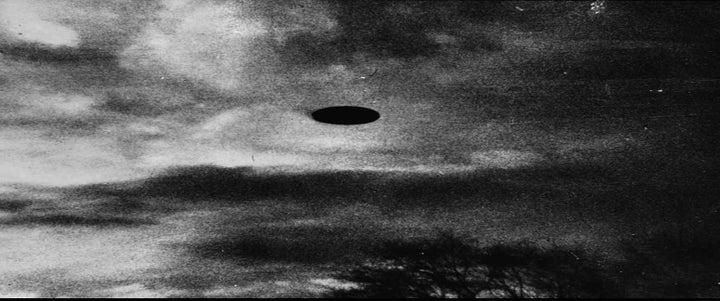
For the southern Indian state of Kerala, red is not truly an alien color. The state's powerful leftist organizations often garnish the streets with red flags and signs in an apparent show of strength. But when the red rain arrived in July 2001, it caught everyone off guard. Now, even after a decade, its implications are debated in scientific circles. Some researchers suggest this phenomenon as an obvious mark of alien life form.
During that time, sporadic rain brought spells of colored showers in many parts of the state, mostly scarlet water. The dust particles in the atmosphere could color the rain -- this was the most reasonable explanation initially. But the particles showed biological cell like structure under the microscope.
Godfrey Louis, now a physicist at Cochin University of science and technology examined the red particles collected from different parts of the state. He tentatively claimed that the absence of DNA in the samples was an indication of the alien origin of these microbes. Seemingly, they had fallen to earth on a comet that might have exploded above earth of before the red rain. The results were published in 2006.
Later on, the samples were shared with Prof. Wickramasinghe of Cardiff University in the UK, a well-known astrobiologist who worked with the late Fed Hoyle, a champion of panspermia theory.
Panspermia is the theory that basic life forms exist all over the universe in comets and interstellar dust clouds and are being transported from one location to another. Microorganisms remain frozen and a small fraction of them could survive the extreme conditions to reach other parts of the cosmos. Accordingly, the life of Earth was most probably seeded from one of these alien sources. In other words, our ancestral origin is extraterrestrial.
The subsequent investigations of this rain sample using different techniques concluded that the red rain particles were an unusual type of biological cell. Wickramasinghe agreed that the cells do have properties that are not shared by other microbial cells on Earth. Although that does not inevitably make them alien, there are indications that they may be so.
In a 2010 pre-print paper, Wickramasinge and other authors describe that the cells found in the Red Rain survive and grow after incubation for periods of up to two hours at 121 degrees celsius. Under these conditions, daughter cells appear within the original mother cells and the number of cells in the samples increases with length of exposure to 121 degrees celsius. No such increase in cells occurs at room temperature, suggesting that the increase in daughter cells is brought about by exposure of the Red Rain cells to high temperatures.
The widely accepted norm has always been in favor of terrestrial origin of life. Life began on Earth in a primordial soup in the simplest possible way about 3.5 billion years ago. But, the proponents of panspermia theory argue that life is a cosmic phenomenon, not just a local incident associated with this planet. As one can imagine, it is not easy to get a warm reception for such a theory because science demands extraordinary evidence for extraordinary claims.
In the meantime, in Kerala, several monsoons have come and gone, many water wells vanished, some rivers died and people forgot about the Red Rain. Also, the alien seeds never came back riding their comets!
